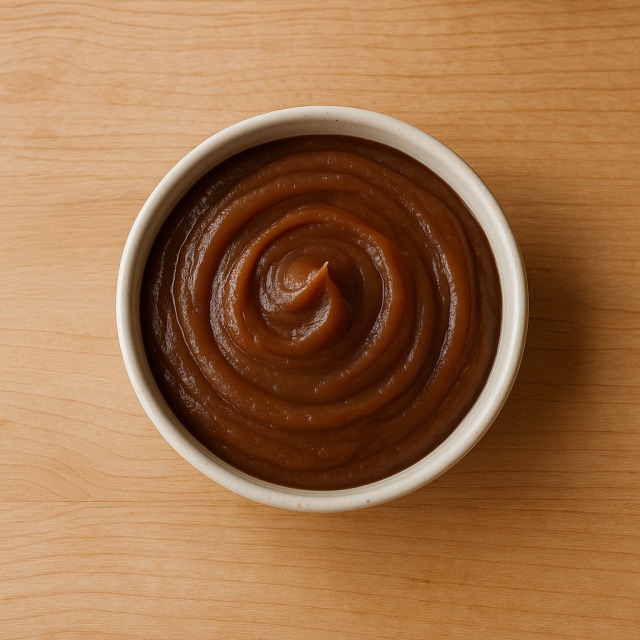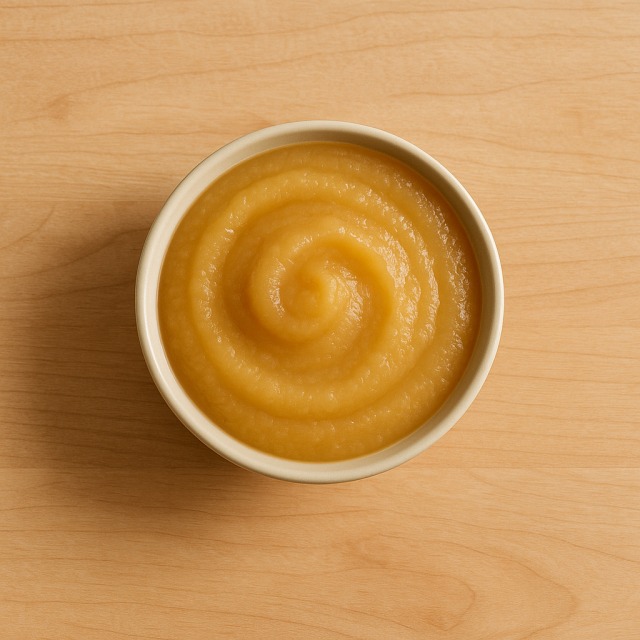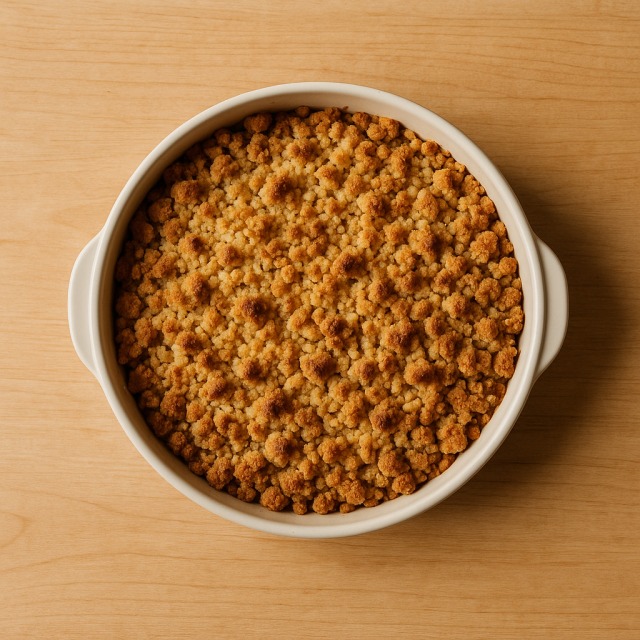Calorie Chart / Desserts / Compote
How Many Calories Are in Compote?
Calculation of the nutritional value & Recommended Dietary Intake of compote
For g and a calorie requirement of kcal
| Calories 100 kcal | Proteins 0.5 g | Lipids 0.2 g | Carbohydrates 24 g |
| 5% | 1% | 0% | 9% |
Health benefits of compote

Compote - 100g
Calories 100 kcal
Proteins 0.5 g
Lipids 0.2 g
Carbohydrates 24 g
Compote is traditionally a smooth purée of cooked fruit, most often made from apples but sometimes enriched with pears or berries. With 100 kcal per 100 g, it is considered a moderate-calorie option: lower in calories than many desserts yet more concentrated than raw fruit. Although gentle heating reduces some vitamin C, a standard portion still supplies antioxidants such as quercetin, vitamin C residues, vitamin K, and a useful amount of potassium, all without adding significant lipids (0.2 g) or proteins (0.5 g). These nutrients, together with its moderate calories, make compote a handy alternative when you need a sweet note without an excessive calorie load.
The natural pectin present in apple-based compote can have a beneficial effect on digestion by helping regulate intestinal transit and moderating the glycemic response. Because the product is almost fat-free and provides slow-released carbohydrates, its calories are less likely to cause sharp blood-sugar peaks. Some studies even point to a supposed satiety effect: replacing higher-calorie snacks with compote may reduce overall daily calories, provided no extra sugar is added.
Historically, "compote" comes from the Latin "compositus", meaning "mixture". It appeared in French cookbooks as early as the 17th century as a way to preserve autumn fruit before refrigeration existed. That historical role—extending the fruit season—explains why compote, despite its calories, remained popular in monasteries and royal courts alike.
To recap, compote brings moderate calories, natural fruit sugars, practically zero fat, and helpful micronutrients—a nutritious bridge between fresh fruit and richer desserts.
Tips for incorporating compote into a balanced diet
Because compote delivers mostly carbohydrates, integrating it into a balanced plate means adding proteins and healthy fats to level out the calories and improve satiety. A classic breakfast bowl combines two tablespoons of compote with plain yogurt and a sprinkle of oat flakes; the proteins from yogurt and the fiber from oats slow down absorption and stretch the same calories over a longer period.
For athletes who need quick pre-workout energy, try spreading compote on a warm pancake. The easily digested sugars top up glycogen without the heavy calories of chocolate spreads. If you are watching calories even more closely, replace regular compote with light compote and save roughly 25 kcal per serving.
At lunch, pair a lean grilled pork tenderloin with a side of spiced apple compote instead of fries. The dish stays flavorful while cutting total meal calories dramatically. In baking, you can substitute half the butter in a cake recipe with the same weight of compote; this trick reduces saturated fat and overall calories while keeping the crumb moist.
Whichever option you choose, keep portions around 100–120 g so the calories fit smoothly into your daily budget. Balanced accompaniments and portion control are the keys to enjoying compote without turning its moderate calories into excessive calories.
Frequently Asked Questions
- How many calories are in compote?
- There are 100 kcal per 100 g.
- Does compote have more calories than a raw apple?
- Yes. Cooking concentrates the fruit and slightly increases available sugars, so compote provides about 100 kcal per 100 g versus roughly 52 kcal for a raw apple; the difference in calories mainly comes from water loss.
- Is compote suitable for weight-loss diets despite its calories?
- In moderate portions, compote can fit a calorie-controlled plan. Its fiber and absence of fat help satisfy sweet cravings while contributing fewer calories than cakes or cookies. Just be sure to count those calories in your daily allowance.
- Which fruit compote usually contains the fewest calories?
- Apple-only or mixed strawberry/apple variants without added sugar are among the lowest, often dipping below 90 kcal per 100 g. Tropical blends with banana or mango trend higher in calories.
- Is homemade compote lower in calories than store-bought?
- Homemade versions without added sugar replicate the natural 100 kcal baseline. Many industrial recipes add sucrose or glucose-fructose syrup, pushing calories well above 120 kcal; always check the label.
- Can athletes rely on compote for quick energy?
- Yes. The easy-to-digest carbohydrates deliver fast fuel without heavy fats. A 90-g pouch supplies around 90 kcal, ideal for a pre-run snack.
Similar foods
Information provided by Calorie Menu may contain inaccuracies or errors. It cannot, under any circumstances, substitute medical advice or medication.










